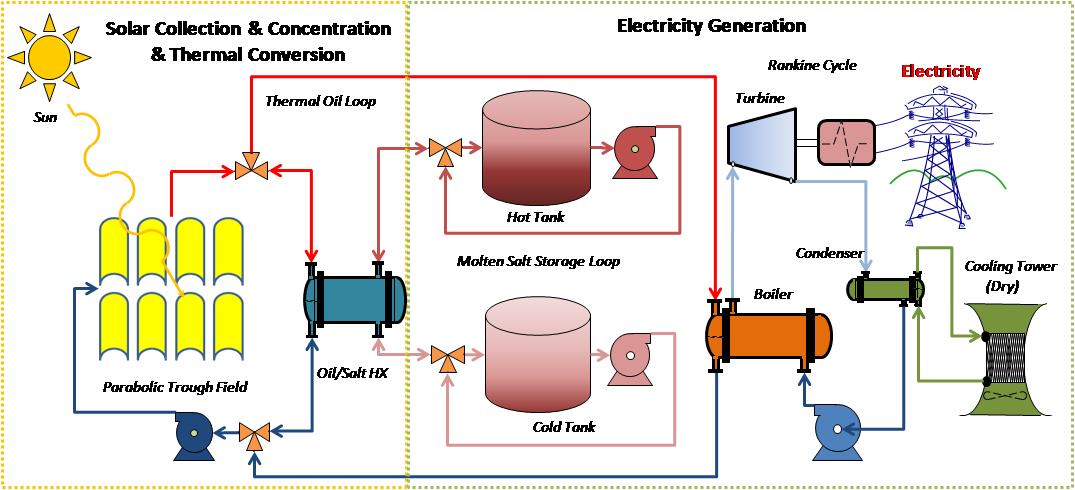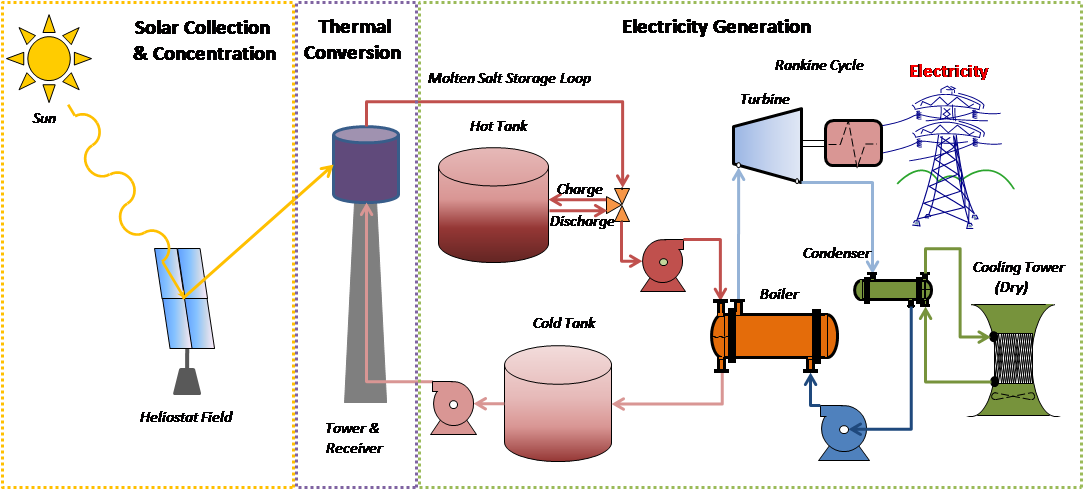About Concentrating Solar Thermal Technologies
Concentrating solar thermal (CST) technologies can produce high-temperature solar thermal energy that can be used to drive industrial processes, including electricity production, and to drive chemical reactions. The most proven CST technologies generate electricity using sunlight.
In all CST technologies, reflectors are used to collect the solar radiation and concentrate it on a receiver with a much smaller area. A higher concentration ratio of reflector-to-receiver area produces higher flux at the receiver, allowing higher temperatures to be achieved in a heat transfer fluid. The thermal energy in the heat transfer fluid can then either be stored, or converted into process heat, or converted into mechanical energy and ultimately into electricity through a power cycle.
The most significant advantage of CST technologies over other renewable energy technologies is their ability to store thermal energy and convert it into process heat or into electricity when needed; dispatchable power generation.
The most common energy storage medium is molten salt, and the most conventional power cycle is the superheated steam Rankine cycle. The Rankine cycle is also used in fossil fuel and nuclear power plants, but CST technologies have the potential to achieve more efficient power cycles at higher temperatures. The most proven CST power plants use parabolic troughs, although the rapidly emerging alternative is a central receiver tower, sometimes referred to as a power tower.
Parabolic troughs are linear focusing technologies, with a concentration ratio of 50–80. The trough reflects the sun’s rays onto a linear receiver fixed at the focus on the parabola, and tracks the sun in one direction – normally from east to west. The receiver usually consists of an absorber metal pipe insulated inside an evacuated glass tube. A synthetic oil is generally used as the heat transfer fluid, which can be heated to temperatures of around 400 °C.
Central receiver towers are point-focusing technologies with a concentration ratio of about 200–1000. A field of many mirrors, called heliostats, reflects the sun’s rays onto a central receiver located on a distant tower, possibly a 1km away. Each heliostat has two-axis-tracking to direct the sun’s rays towards the central receiver, which is normally an array of absorber tubes, referred to as an external receiver. The heat transfer fluid in the absorber tubes could be molten salt, which can be heated to temperatures of around 560 °C, or steam. Other heat transfer fluids are under consideration, as well as cavity receivers, which partially insulate the absorber tubes to reduce heat losses.
Parabolic trough power plant

Central receiver tower power plant

